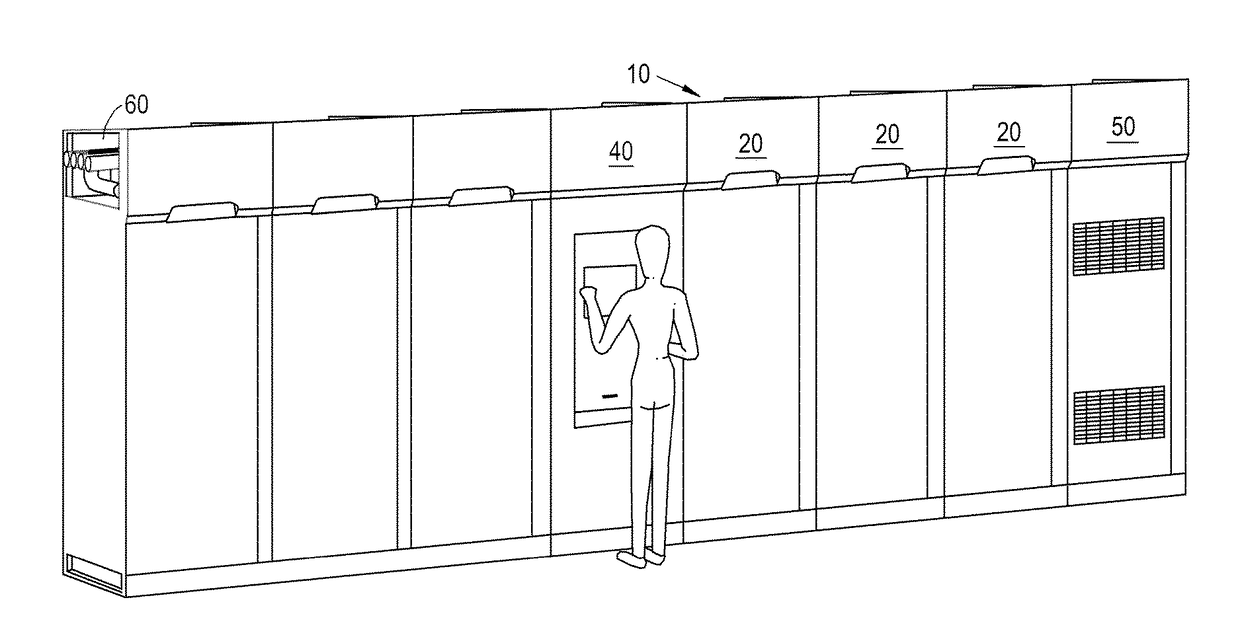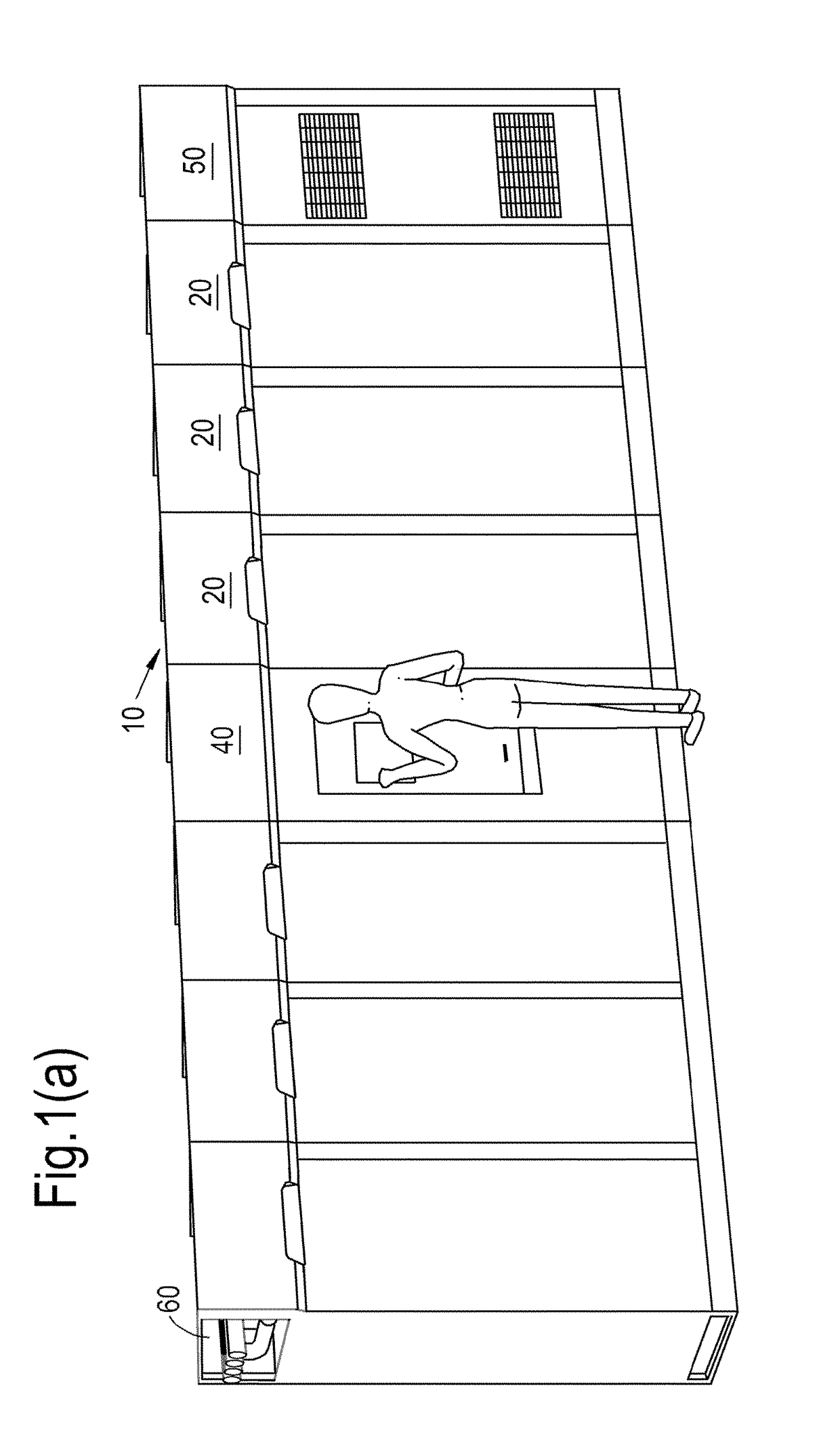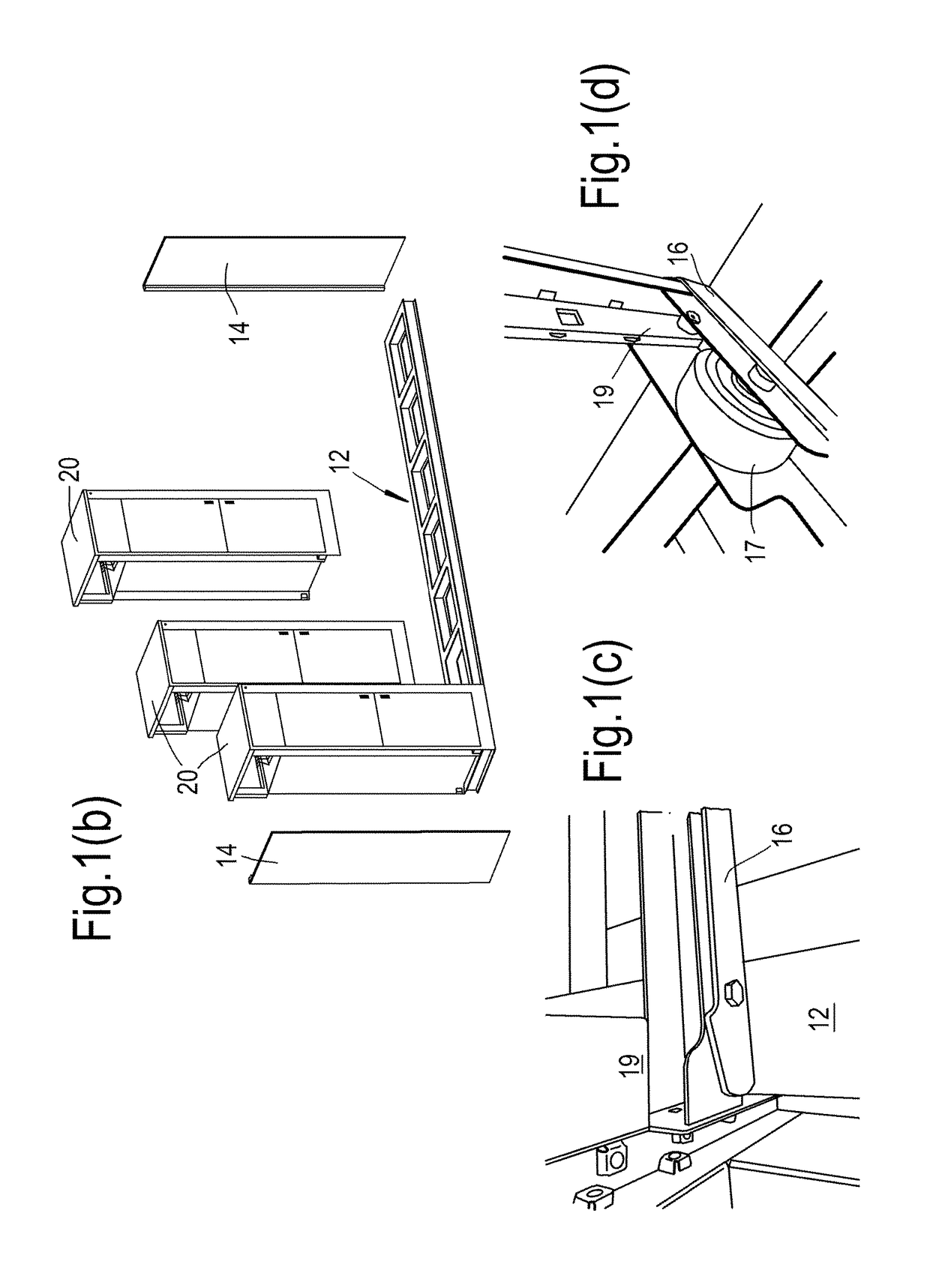Locker system
a locking system and door-to-door technology, applied in the field of locking systems, can solve the problems of unsustainable door-to-door delivery services, unsuitable for domestic cooling devices, and insufficient utilization of their full capacity, so as to facilitate rapid switchover, reduce costs, and facilitate the effect of rapid switchover
- Summary
- Abstract
- Description
- Claims
- Application Information
AI Technical Summary
Benefits of technology
Problems solved by technology
Method used
Image
Examples
Embodiment Construction
[0139]The apparatus 10 according to an embodiment of the present invention shown in FIG. 1 comprises a plurality of units representing refrigerated locker modules 20, an access control module 40 for controlling access to and monitoring the status of the locker modules and a refrigeration plant module 50 coupled to a distribution system 60. The distribution system 60 is shown running along the top of the apparatus 10, to circulate and distribute heat transfer fluid from the refrigeration plant module 50 to the rest of the apparatus 10. In the particular embodiment shown in FIG. 1(a), the plurality of locker modules 20, the access control module 40 and the refrigeration plant modules 50 are arranged side-by-side to conserve floor space. However, other arrangements of the units are permissible such as a vertically stacked arrangement. Each of the units representing the plurality of locker modules 20, access control module 40 and the refrigerated plant module 50 are arranged in modular ...
PUM
 Login to View More
Login to View More Abstract
Description
Claims
Application Information
 Login to View More
Login to View More - R&D
- Intellectual Property
- Life Sciences
- Materials
- Tech Scout
- Unparalleled Data Quality
- Higher Quality Content
- 60% Fewer Hallucinations
Browse by: Latest US Patents, China's latest patents, Technical Efficacy Thesaurus, Application Domain, Technology Topic, Popular Technical Reports.
© 2025 PatSnap. All rights reserved.Legal|Privacy policy|Modern Slavery Act Transparency Statement|Sitemap|About US| Contact US: help@patsnap.com



